Weight loss can be both exciting and challenging. This guide is packed with practical information to help you navigate the journey. We’ll break down the science behind weight loss, explore healthy eating habits, and provide tips for how you can lose weight by just adapting food for weight loss in dinner. Let’s get you started on the path to a healthier you!
For effective weight loss, dinner should be balanced, nutrient-dense, and satisfying while being lower in calories. Here are some of the best 5 foods for weight loss in dinner: by Diet Guidance
1. Lean Proteins for weight loss in dinner

Lean protein refers to sources of protein that are low in total fat, particularly saturated fat, and also tend to be lower in calories.expand_more Here’s a breakdown: By diet guidence
Low fat content: Lean protein sources typically contain less than 10 grams of total fat per 3.5 ounce (100 gram) serving.expand_more
Low saturated fat: They specifically limit saturated fat, the kind that can raise bad cholesterol levels and impact heart health.expand_more The USDA definition considers a lean protein source to have less than 4.5 grams of saturated fat per serving
Lean protein offers several advantages over its fattier counterparts:
Reduced heart health risks: By being lower in saturated fat, lean protein can help promote better heart health by not contributing to high cholesterol.
Lower calorie intake: The lower fat content translates to fewer calories, which can be helpful for weight management or maintaining a healthy weight.
Feeling full: Protein is known to be satiating, so lean protein sources can help you feel satisfied after a meal.
Examples of lean protein:
- Animal sources: Skinless chicken breast, fish (white-fleshed varieties like cod or tilapia), lean cuts of red meat (loin or round cuts), egg whites, low-fat dairy (cottage cheese, Greek yogurt).
- Plant sources: Beans, lentils, tofu, tempeh, certain nuts and seeds (in moderation due to higher calorie content).
3. Whole Grains for weight loss in dinner
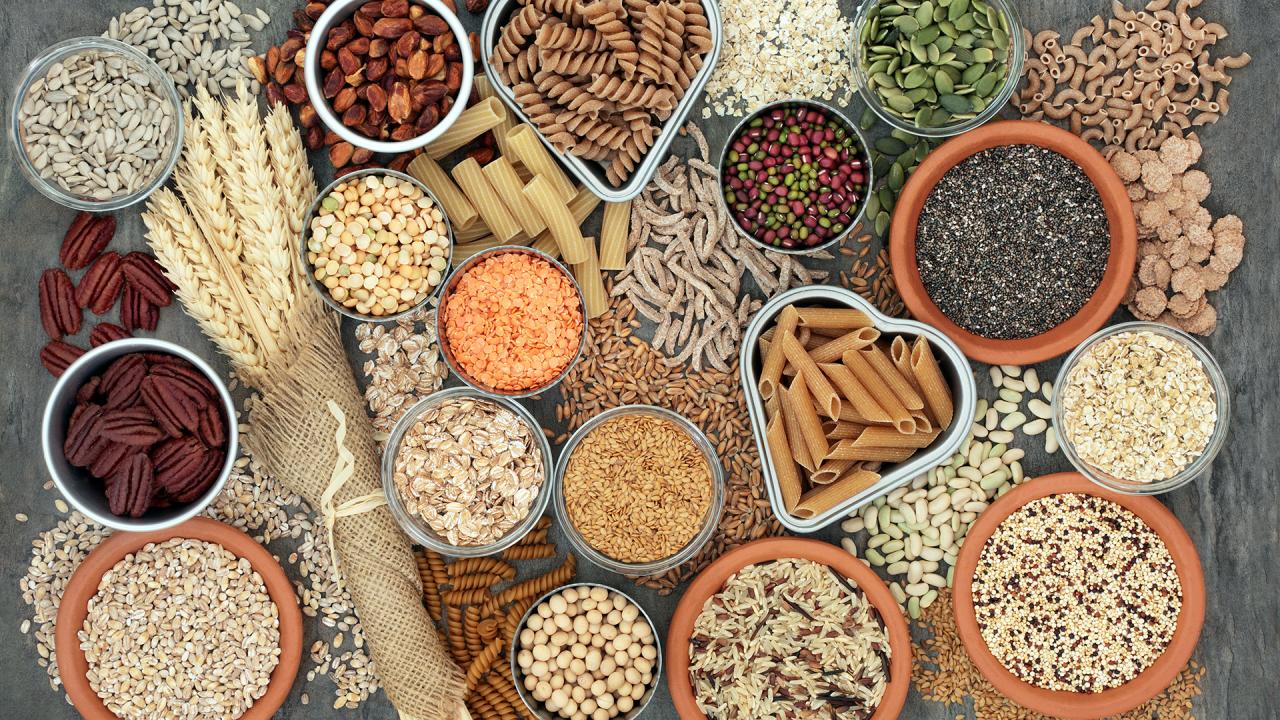
Whole grains are the complete seeds of cereal plants like wheat, oats, barley, and corn, or pseudocereals like quinoa and amaranth. Unlike refined grains, which have been processed to remove the bran and germ, whole grains contain all three parts:
- Bran: The hard outer layer, rich in fiber, vitamins, minerals, and antioxidants.
- Germ: The core of the seed, packed with vitamins, minerals, and healthy fats.
- Endosperm: The largest part, containing starchy carbohydrates that provide energy.
Here’s why whole grains are considered a healthier choice:
- More nutrients: They retain all the natural goodness of the grain kernel, offering a more complete nutritional profile compared to refined grains.
- Higher fiber content: The bran provides dietary fiber, which aids digestion, promotes gut health, and helps you feel fuller for longer.
- Slower blood sugar rise: The fiber in whole grains slows down the absorption of carbohydrates, leading to steadier blood sugar levels and preventing energy crashes.
- Potential health benefits: Studies suggest that consuming whole grains regularly may reduce the risk of heart disease, type 2 diabetes, and certain cancers.
Examples of whole grains:
- Whole wheat
- Brown rice
- Oats
- Barley
- Quinoa
- Rye
- Millet
- Sorghum
- Buckwheat
- Amaranth
4. Healthy Fats for weight loss in dinner
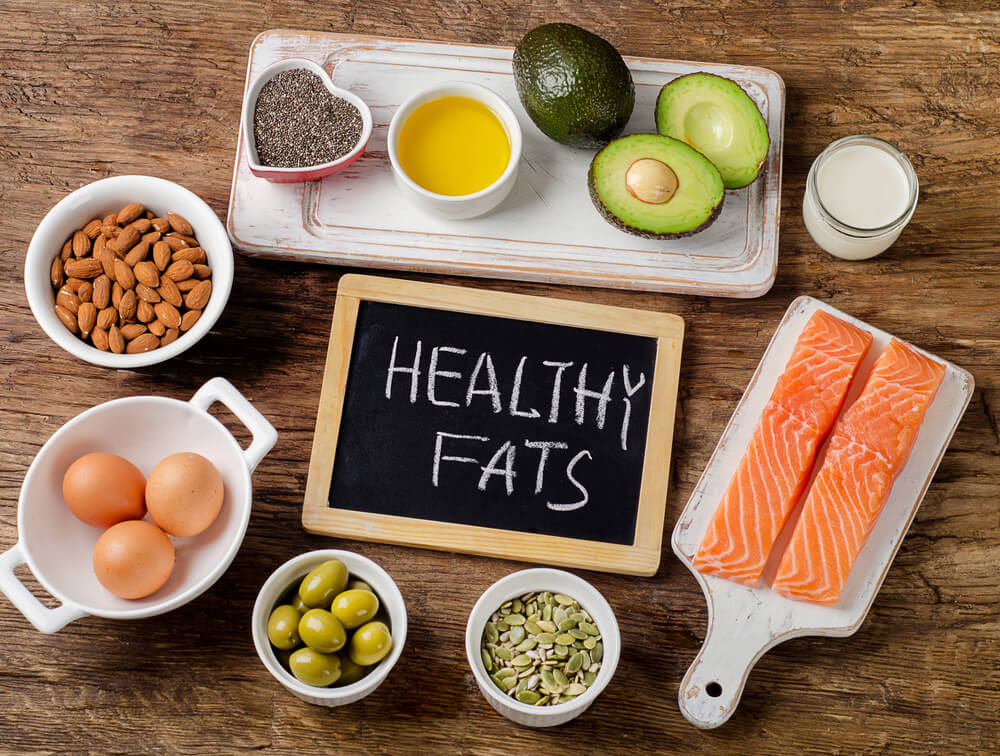
Healthy fats
Healthy fats, also known as “good fats,” are essential nutrients that play a crucial role in your overall health. Unlike unhealthy fats, which can contribute to heart disease and other health problems, healthy fats offer a range of benefits:
- Improved heart health: They can lower bad (LDL) cholesterol levels while maintaining good (HDL) cholesterol, reducing the risk of heart disease and stroke.
- Reduced inflammation: Healthy fats have anti-inflammatory properties, which can help combat chronic conditions like arthritis and inflammatory bowel disease.
- Enhanced nutrient absorption: Certain vitamins, like vitamins A, D, E, and K, are fat-soluble, meaning they require fat for proper absorption in the body.
- Increased satiety: Healthy fats can help you feel fuller for longer, promoting weight management and reducing cravings.
- Improved brain function: Healthy fats are essential for brain development and function, playing a role in memory, learning, and mood.
There are two main types of healthy fats:
- Monounsaturated fats: These fats are liquid at room temperature and solid when refrigerated. They are found in foods like avocados, olive oil, nuts (almonds, cashews, peanuts), and seeds (sesame seeds, sunflower seeds).
- Polyunsaturated fats: This category includes omega-3 and omega-6 fatty acids. Omega-3s are particularly beneficial for heart health and are found in fatty fish (salmon, tuna, mackerel), flaxseeds, walnuts, and chia seeds. Omega-6s are more widely available in plant sources like vegetable oils (soybean, corn) and nuts. It’s important to maintain a balance between omega-3s and omega-6s in your diet.
Here are some tips for incorporating healthy fats into your diet for weight loss
- Use healthy oils like olive oil or avocado oil for cooking and salad dressings.
- Include fatty fish in your meals at least twice a week.
- Enjoy a handful of nuts or seeds as a snack.
- Add avocado to sandwiches, salads, or toast.
- Choose nut butters over refined spreads.
- Remember, moderation is key. While healthy fats are beneficial, consuming them in excess can still contribute to weight gain. Focus on incorporating a variety of healthy fats from whole food sources into your diet for optimal health.
5. Low-Calorie, High-Volume Foods for weight loss in dinner
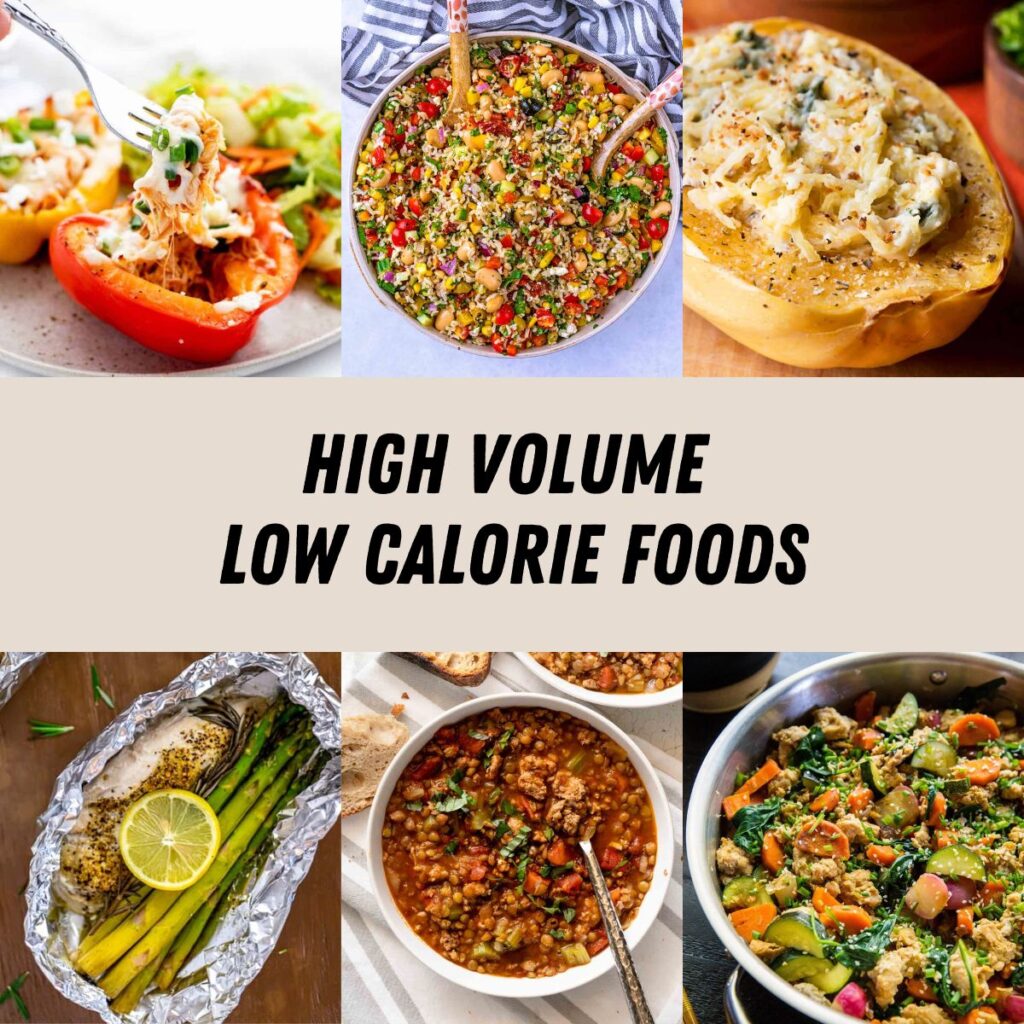
Low-calorie, high-volume foods are those that are filling and satisfying despite being low in calories. These foods are ideal for weight management or healthy eating plans as they help you feel full without going over your daily calorie budget.
Here are some examples of low-calorie, high-volume foods:
- Leafy greens:Leafy greens like spinach, kale, arugula, and romaine lettuce are incredibly low in calories and packed with nutrients. They are a great way to add bulk to your meals and salads without adding many calories.
- Cruciferous vegetables:Broccoli, cauliflower, Brussels sprouts, and cabbage are all cruciferous vegetables that are low in calories and high in fiber. They are also a good source of vitamins and minerals.
- Watermelon:Watermelon is a refreshing and hydrating fruit that is over 90% water. It is a great low-calorie snack or addition to salads.
- Soup: Broth-based soups can be very filling and low in calories. They are a great way to get in your vegetables and stay hydrated.
- Zucchini:Zucchini is a versatile vegetable that can be used in many different dishes. It is low in calories and high in fiber and water.
- Berries:Berries are a healthy and delicious snack that is low in calories and high in antioxidants.
- Non-starchy vegetables:Non-starchy vegetables like zucchini, mushrooms, and bell peppers are all low in calories and carbs but high in fiber and water. They’re a great way to add bulk and flavor to your meals without adding a lot of calories.
Sample Dinner Ideas for weight loss
Here are a few delicious and healthy dinner options to help you reach your weight loss goals:
Protein and Veggie Bowls:
- Spiced Chickpea Buddha Bowl: Roast chickpeas with your favorite spices, toss them over a bed of quinoa or brown rice, add roasted vegetables like broccoli and sweet potato, top with a light tahini dressing and a sprinkle of fresh cilantro.
- Salmon with Lemon Dill Asparagus: Bake or pan-sear salmon seasoned with lemon and dill. Serve alongside roasted asparagus and a whole-wheat roll.
Quick and Easy Soups:
- Lentil Soup: A hearty and comforting lentil soup made with vegetables and broth is a great one-pot meal. Add a squeeze of lemon for extra flavor.
- Minestrone Soup: Loaded with colorful vegetables, beans, and a light tomato broth, minestrone soup is a satisfying and nutritious choice.
Vegetarian Options:
- Stuffed Peppers: Bell peppers stuffed with a mixture of brown rice, black beans, corn, and spices are a delicious and protein-packed meal.
- Portobello Mushroom Burgers: Marinate portobello mushrooms, grill them, and assemble on whole-wheat buns with your favorite burger toppings like lettuce, tomato, and a light vinaigrette.
Hearty Salads:
- Quinoa Salad with Grilled Chicken: Combine cooked quinoa with grilled chicken breast, chopped vegetables like cucumber and bell pepper, crumbled feta cheese, and a lemon vinaigrette dressing.
- Black Bean and Corn Salad: A refreshing and flavorful salad made with black beans, corn, chopped vegetables like red onion and avocado, tossed in a light lime dressing.
Remember: These are just a few ideas to get you started. Feel free to customize these recipes with your favorite flavors and ingredients.
Here are some additional tips for healthy weight loss dinners:
- Focus on lean protein sources: Opt for grilled chicken, fish, tofu, or beans as your main protein source.
- Load up on vegetables: Include a variety of colorful vegetables in your meals for added fiber and nutrients.
- Choose healthy cooking methods: Baking, grilling, and steaming are all healthy cooking methods that help preserve nutrients.
- Control portion sizes: Use a smaller plate and avoid going back for seconds.
- Don’t skip dessert: Enjoy a small piece of fruit or a serving of Greek yogurt with a sprinkle of berries for a satisfying and healthy end to your meal.
Tips for Weight Loss Dinners
- Balance: Include a lean protein source, healthy carbohydrates, and plenty of vegetables. This will provide your body with sustained energy, keep you feeling full, and deliver essential nutrients.
- Low calorie, high volume: Focus on ingredients that are filling without packing on the calories. Leafy greens, vegetables, broth-based soups, and whole grains are all excellent choices.
- Smart fats: Include healthy fats from sources like olive oil, avocado, or fatty fish. These fats will help you feel satisfied and contribute to nutrient absorption.
- Portion control: Use a smaller plate and be mindful of how much you eat.
- Cooking methods: Choose healthy cooking methods like baking, grilling, or steaming to preserve nutrients and minimize added fats.
- Hydration: Drink plenty of water before and during your meal.
- Balanced Macronutrients: Include a mix of protein, healthy fats, and complex carbohydrates.
- Limit Processed Foods: Avoid high-calorie, processed foods and sugary drinks.
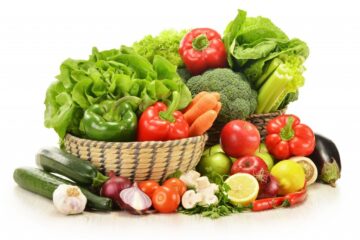
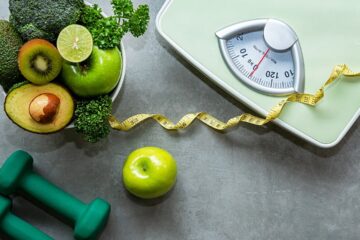
0 Comments